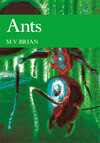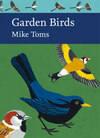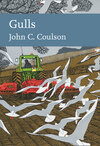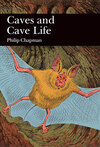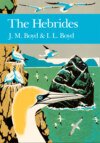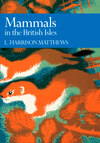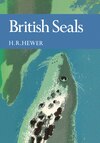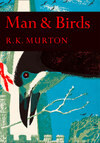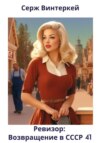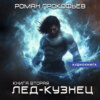Loe raamatut: «Ants»
EDITORS:
John Gilmour M.A. V.M.H.
Margaret Davies D.Sc.
Kenneth Mellanby C.B.E. Sc.D.
PHOTOGRAPHIC EDITOR:
Eric Hosking O.B.E. Hon. F.R.P.S. F.I.I.P.
The aim of this series is to interest the general reader in the wild life of Britain by recapturing the inquiring spirit of the old naturalists. The editors believe that the natural pride of the British public in the native fauna and flora, to which must be added concern for their conservation, is best fostered by maintaining a high standard of accuracy combined with clarity of exposition presenting the results of modern scientific research.

COPYRIGHT
William Collins
An imprint of HarperCollinsPublishers Ltd 1 London Bridge Street London SE1 9GF WilliamCollinsBooks.com
This eBook edition published by William Collins in 2018
© M. V. Brian The author asserts his moral rights to be identified as the author of this work
A catalogue record for this book is available from the British Library.
All rights reserved under International and Pan-American Copyright Conventions. By payment of the required fees, you have been granted the non-exclusive, non-transferable right to access and read the text of this eBook on-screen. No part of this text may be reproduced, transmitted, downloaded, decompiled, reverse engineered, or stored in or introduced into any information storage and retrieval system, in any form or by any means, whether electronic or mechanical, now known or hereinafter invented, without the express written permission of HarperCollins Publishers.
HarperCollinsPublishers has made every reasonable effort to ensure that any picture content and written content in this ebook has been included or removed in accordance with the contractual and technological constraints in operation at the time of publication.
Source ISBN: 9780007308378
Ebook Edition © DECEMBER 2018 ISBN: 9780007406470
Version: 2019-01-09
CONTENTS
COVER
TITLE PAGE
COPYRIGHT
COLOUR PLATES
PLATES
EDITORS’ PREFACE
AUTHOR’S PREFACE
1. Ants as insects
2. Ant structure
3. Types of British ant
4. Feeding
5. Nesting
6. Numbers and survival
7. Brood rearing
8. Ant communities
9. Ants and other animals
10. Culture methods
PICTURE SECTION
BIBLIOGRAPHY
DISTRIBUTION MAPS
INDEX
ABOUT THE PUBLISHER
COLOUR PLATES
1. Myrmica lobicornis, Strongylognathus, Myrmecina, Tetramorium, Stenamma, Anergates, Monomorium, Solenopsis, Myrmica rubra, Leptothorax, Formicoxenus
facing page
2. Tapinoma, Lasius niger, Lasius flavus, Lasius fuliginosus, Formica rufa, Formica fusca
Painted by Gordon Riley
PLATES
1. Aphids in excavated Lasius flavus nest (Michael Tweedie)
facing page
Aphids attended by Myrmica workers (Michael Tweedie)
2. Formica rufa workers tending aphid colony (Walther Rohdich/Frank W. Lane)
Formica rufa worker “milking” an aphid (Stephen Dalton/N.H.P.A.)
3. Workers attacking a worm (Stephen Dalton/N.H.P.A.)
Workers attempting to immobilise a caterpillar (Harold Doering/Frank W. Lane)
4. Mound of Formica rufa (Stephen Dalton/N.H.P.A.)
Formica rufa on the surface of their nest (Michael Tweedie/N.H.P.A.)
5. Workers of Formica rufa carrying a leaf (Stephen Dalton/N.H.P.A.)
Single worker carrying pine needle (Harold Doering/Frank W. Lane
6. Rubber cast of Tetramorium caespitum nest (M. V. Brian)
Rubber cast of Lasius alienus nest (M. V. Brian)
Rubber cast of Lasius niger nest (M. V. Brian)
Rubber cast of Formica fusca nest (M. V. Brian)
7. Worker of Formica rufa squirting a jet of formic acid (Raymond Kleboe/Radio Times Hulton Picture Library)
Ant in defence attitude (Stephen Dalton/N.H.P.A.)
Ant in threatening posture (Harold Doering/Frank W. Lane)
8. Artificial nest containing Myrmica (Michael Tweedie)
Myrmica workers licking and feeding larvae (Michael Tweedie)
Myrmica workers polishing larvae (Michael Tweedie)
Myrmica nest showing clusters of eggs and pupae (Michael Tweedie)
9. Winged sexuals and workers of Lasius flavus (Stephen Dalton/N.H.P.A.)
Workers of Lasius flavus with large sexual larvae (Stephen Dalton/N.H.P.A.)
10. A worker Lasius niger dragging a cocoon (Michael Tweedie)
Lasius niger worker with larva (Michael Tweedie)
11. Lasius flavus mounds in limestone grassland (M. V. Brian)
Close-up of Lasius flavus mound (M. V. Brian)
12. Lasius flavus mounds in sandy soil (M. V. Brian)
Close-up of Lasius flavus mound and heathers (M. V. Brian)
13. Worker of Formica rufa being attacked by Lasius flavus (Stephen Dalton/N.H.P.A.)
Workers of Formica rufa attacking a hostile alien (Stephen Dalton/N.H.P.A.)
14. Formica rufa worker swollen with honey-dew (Stephen Dalton/N.H.P.A.)
Food exchange between Formica rufa workers (Stephen Dalton/N.H.P.A.)
15. Workers of Formica rufa restraining winged sexual (Stephen Dalton/N.H.P.A.)
Winged sexual captured by workers (Stephen Dalton/N.H.P.A.)
Workers of Formica rufa capturing a fly (Stephen Dalton/N.H.P.A.)
16. Formica rufa worker carrying another (Harold Doering/Frank W. Lane)
Formica rufa worker carrying a worm (Harold Doering/Frank W. Lane)
EDITORS’ PREFACE
This series has always tried to give a balanced and authoritative account of a subject of interest to the general reader who is concerned with the countryside, and who wishes to know more about its fauna and flora. In Dr M. V. Brian we have an author who is recognized as the foremost authority in Britain on ants. Over a period of nearly thirty years, first as a lecturer in zoology in the University of Glasgow, and since 1953 with the Nature Conservancy at Furzebrook Research Station in Dorset, he has studied social insects in general and ants in particular. His most intensive studies in recent years have been on the heathlands of southern England, but he is also familiar with the species restricted to other parts of the country. He has written more than seventy original scientific papers describing his research, and has clearly contributed greatly to the advancement of knowledge of this group.
Since biblical days, ants have interested the general public as well as the specialist entomologist. The insects’ apparent industry has endeared them to the moralist, and has been equated with virtue and prudence in the fables of many cultures. Parables based on ants are thus widespread, not only in scripture but in the tales of such writers as Aesop and La Fontaine. This has given rise to a general belief that ants are beneficial insects whose presence should always be encouraged. On the other hand gardeners from their own observations may be more doubtful, particularly when ants invade and infest their houses. Picnickers in our woods who sit near – or even on – an ant hill may feel rather differently. All country dwellers are aware of ants, but few have any accurate information on the subject, and many widely accepted legends have little foundation in fact. We believe that this book will therefore fill a real demand, by giving the sort of information that has so far been difficult to obtain.
Dr Brian draws continually in his text on his personal experiences and on the brilliant investigation he himself has made. At the same time he would be the first to insist that no one person could do more than a fraction of the research necessary for the writing of a book like this. He clearly has to depend on the work of many others, and the reader will notice that though he treats others’ findings with the same rigorous criticism he reserves for his own observations, he also gives them the fullest credit when it is deserved. He has therefore produced a readable and informative book which describes the nature and behaviour of ants and their importance in the ecology of our countryside.
AUTHOR’S PREFACE
This book is about the natural history of the ants that occur in the British Isles. Most of the species have wide temperate Eurasian distributions and, though unspectacular compared with some tropical types, play an important part in terrestrial ecosystems. The book attempts to bring together much recent work on their ecology and general biology and is, I hope, written in a way that will interest and be of use to all naturalists.
A reading list is added to guide anyone who wishes to go further. No references are given and I am thus particularly indebted to the many workers in this field whose publications have supplied the basic material of this book. Technical names for structural features are explained in a series of figures, the main elements of which have been extracted from Charles Janet’s detailed drawings published at the turn of the century.
At the last moment it was possible to improve the book enormously by including distribution maps prepared by the Biological Records Centre. The information was collected and collated by Mr K. E. J. Barrett, who introduces them.
I should like to thank my wife for reading the manuscript and discussing it with me.
M. V. Brian
November 1976
Furzebrook, Wareham, Dorset
CHAPTER 1
ANTS AS INSECTS
ALL ants are social insects – but only in the female sex; males exist briefly to generate sperm for sexual reproduction. Females are of two distinct sorts. One is relatively large and designed to fly and seek out new places in which to live; she lays fertilized eggs and influences the manner of brood-rearing in the colony. The other is smaller and wingless with a much simpler form altogether; she devotes most of her time to nest making and defence, brood hygiene and feeding and, later in life, to collecting food outside the nest. As ant societies last a long time and make easily defended nests that are climatically equable it is possible for the young to be legless grubs, but whether they have evolved from a normal six-legged state or whether they were already legless in a pre-social evolutionary stage, perhaps as parasites, is uncertain. They can do little more than arch their bodies, suck and digest the food that the adults give them, and urinate. They are, however, well designed for growth and when, after several moults to allow for expansion, they have stored enough raw materials, all their food residues are ejected at one go and the buds of the rudimentary adult inside grow and join up. After one more moult a further metamorphosing stage is produced (the pupa) from which the final adult later emerges.
In the tropics ants have evolved enormous societies with nearly every conceivable way of living in the terrestrial habitat. Many thousands of species are already known and more doubtless remain to be discovered. Here in north-west Europe ants are by no means so spectacular but their social organization is impressive. They live nearly everywhere and play an important part in natural processes.
DEVELOPMENT OF THE SOCIETY
Ant societies maintain themselves and reproduce during the summer but stay quiet and inactive during most of the winter. Batches of large reproductive females and males (collectively known as sexuals) are produced which fly from the nest, congregate and copulate. Enough sperm is transferred to a sac inside the female to last her lifetime, which may be more than ten years. After flying around searching for a good place the females settle, break off their wings and dig a cell. Wings are a definite disadvantage for soil-living insects; they are difficult to keep clean and easily stick on to damp soil. The wing muscles are then of course also superfluous; they degenerate and their substance is transferred to eggs growing in the ovaries and to food-producing glands in the head. A cell is dug in the soil or soft wood and eggs are laid. These are sticky and form a cluster which the queens, as they may now be called, guard. No food is fetched from outside but some of the eggs are eaten by the first grubs which thus grow solely on the products of the queen’s body. After the usual number of moults and metamorphoses, small, relatively simple, wingless females mature. These relieve the queen of the care and defence of the brood, enlarge and open up the nest and bring in food from outside; they are called workers.
At first all the workers are small but as time goes on bigger and bigger ones appear. After this come males and the society can be considered fully mature when finally winged females are formed. Normally societies live as long as the original founding queens but if re-queening can take place then, at least in theory, indefinite survival is possible.
A typical situation has just been described; in fact there are many variations. Thus in primitive societies the queens may forage to begin with. Again, not all queens can fly and some can but do not (they prefer to stay in the parental nest). Often new colonies are founded as buds of existing ones, complete with all types and stages from the start. Quite a lot of species are socially parasitic, either temporarily during colony initiation or permanently, and in some of these workers no longer appear and males are wingless. Although in all ants the workers have no wings, and in most they lack sperm sacs, in many species they do in fact lay eggs. These are of course unfertilized but they may develop into males or, rarely, females but they can also serve as a food store.
EVOLUTION OF SOCIAL LIFE
By the Eocene period (70 million years ago) a great many varieties of ants had evolved, many of them much the same in size, shape and structure as those that exist today; presumably they were social, too, but perhaps to a lesser degree. Even from the Upper Cretaceous period (100 million years ago) a primitive worker (Sphecomyrma) is known. It shows characteristics in common with certain families of solitary wasps. The first few steps towards social life are obscure. A likely speculation suggests that it all started with a wasp-like creature that collected soil animals, put them in cells, laid eggs on them and then went off. On hatching the larvae burrowed into the prey and ate it; if too many eggs were laid the smaller, weaker sisters were eaten, too. If the female remained with the brood and protected it from enemies an incipient society would exist. Social evolution might have progressed from this stage if the parent continued to collect prey and lay eggs after the first ones had hatched. This would provide the larvae with additional food which could have been taken directly while the parent herself was eating. An important stage in evolution occurred, it is suggested, when the female lived long enough to control the behaviour of the first young adults, prevent their escaping, finding males and founding new groups. Later perhaps wingless progeny which were able to work immediately, by-passing resting stages, dispersal flights, copulation and other phases of the earlier life cycle would be produced. Caste size differences would follow slowly. Direct feeding on prey gave way in most ants (some of the time but not entirely) to egg-eating, sucking up regurgitated digests and, ultimately, to taking milk made in one-time digestive glands. If several equal-aged females associated to start a society, it is likely that the work would be shared in some way: those with bigger and better-developed ovaries would lay eggs whilst others foraged (perhaps with an interchange of functions occasionally). Today the most primitive of surviving ants are found in Australia. On one of these, Amblyopone australis, the first cell to be made is left open and the queens forage for prey in the soil, even before the eggs hatch. These eggs are formed into a mass and may be eaten and, as it were, re-laid fresh at any time. The first larvae are fed on solid insect food; they eventually mature into workers which are as big as the queens and very similar structurally (except for the absence of wings). They can get out of their cocoons without help. These workers forage for prey and feed the brood. In spite of this help the queens go on working and more may join the group from time to time. Myrmecia is another primitive type; it constructs an open cell and forages regularly for nectar, only collecting insects when its eggs hatch. If deprived of prey it can make some growth so presumably it has a body source of food, perhaps its thoracic wing muscles. On a similar level is the European genus Manica of the myrmicine ants which excavates a small nest, leaves the entrance open and goes out to collect prey for its larvae. The workers the queen produces are considerably smaller than herself.
Finally, a stage of evolution is reached which has been called claustral; in this the queen seals herself in a hole and produces the first brood from her own body reserves entirely. Such a limited food supply would favour the evolution through natural selection of small workers which can be produced both more quickly and more economically. However, a big caste divergence necessitates the establishment of effective methods of intercommunication, co-operation and, above all, control. Thus the general theme of ant evolution is from small groups of structurally similar, very versatile females to large groups of structurally dissimilar, highly specialized, interdependent females.
CHAPTER 2
ANT STRUCTURE
THIS is no more than a brief account of the main structural features of females (queens and workers) and their larvae. Males and pupae are only treated superficially. Myrmica rubra will be used as a type; it is a fairly unspecialized species whose structure was meticulously studied by Charles Janet at the end of the nineteenth century. Some of his diagrams have been adapted and reproduced here.
EXTERNAL FEATURES
Like all insects, ants have a hard external covering. This cuticle is many-layered and chemically complex; apart from protecting the body mechanically and providing a strong basis for muscle attachment it also screens out dangerous solar rays and reduces the amount of water vapour that escapes. Water loss can be substantial even in quite humid conditions and this last function is very important to terrestrial animals. Flexibility is achieved by joining rigid segments by a supple connecting membrane folded and tucked inside for protection. Although ants are by no means as hairy as bees they do have a great many simple and usually rather short setae scattered over most parts of the body. Spines also occur in some groups.
As in all insects the ant’s body is divided into three parts – head, thorax and abdomen. The unusual feature in ants (and most other members of this insect order, the Hymenoptera) is the evolution of a petiole towards the front of the abdomen. This is formed by reducing one or two segments to narrow tubes and articulating them. This separates a middle body (called the mesosoma) composed of the thorax and one abdominal segment from a hind body (the gaster) made up of the last seven segments (not all of these are visible). The number of petiole segments is two in the sub-family Myrmicinae (fig. 1) and one in other ants; formicine ants usually have a scale on their petiole (fig. 7). Most of the hinging motion occurs between the mesosoma and the first petiole segment and lies in a vertical plane; the gaster can be brought round under the mesosoma until its tip reaches up to near the jaws. In this way an enemy or prey can be located with the antennae, grasped with the jaws and immediately stung or sprayed with toxin. Damage caused by the bite probably helps the venom to penetrate. In a similar way eggs in the genital aperture can be brought round to the mouth and picked up in the jaws. The ventral side of the gaster can also be bent under the thorax and can be used to stop small objects, principally brood, from slipping backwards as they are being manipulated by the forefeet and mouthparts.
The head is very flexibly articulated on to the thorax and the actual junction protected above by a stiff collar which projects forward from the thorax. The head can be moved downwards and rotated sideways but cannot be lifted very much. However it is arranged in the long axis of the body so that the jaws protrude, an obvious advantage in defensive situations.
The most important sense organs are the antennae (figs. 6, 7). They are hinged so that they can be both extended well in front of the jaws or, in dangerous situations, folded back so that they lie close to the head itself. This hinge occurs at the junction of a long, thin, basal segment (called the scape) and a highly-subdivided club (called the funiculus). These organs undoubtedly help the ant to understand the size and shape of objects in its environment: they can be moved through a wide arc independently or the tips can be brought together on to small objects much less than a millimetre in diameter. A wide variety of chemicals can also be detected and recognized by the antennae and they may also respond to sounds and vibrations in the substratum.
Most ants have the usual insect compound eyes but they are never well-developed, even in males, and in those which spend most of their time underground or following scent trails above ground they may be quite absent. Each eye is formed of a group of small visual organs – ommatidia; in some insects like dragonflies there may be as many as thirty thousand of these but even in flying male ants one thousand is more like the maximum. In one of the wood ants, Formica cunicularia, there are 460 ommatidia in the worker caste; in the common black garden ant, Lasius niger, there are only 120 and in the related but soil-dwelling Lasius flavus a mere 45. Males and sexual females have three small, light-responsive organs on the top of their head (ocelli); their use is not fully understood but it seems likely that they play some part in activity, particularly flying.
The mouth, as in all insects, is surrounded and enclosed by several pairs of articulated appendages. The simplest and most prominent are the jaws (mandibles). These are hollow but have thick, tough walls and they hinge firmly on the front of the head in such a way that they can be either opened wide or closed tightly together (fig. 3). Their sharply serrate margins enable a strong grip to be taken on small objects, such as the leg of a fly. Not all the teeth are of equal size; the front two are larger and can pierce insect cuticle. The back ones are shorter and more frequently used in gripping the brood when it is being carried about. All these teeth wear quite blunt as the worker ages and one or two of the bigger ones may chip away. Between the jaws there lies another pair of jointed structures that carry small palps which are almost certainly used in tasting and feeling food. These maxillae, as they are called, can fold back and cover the mouth completely without interfering with the free movement of the jaws; this is an obvious advantage in fighting. Finally, there is a tongue (the labium) that can be ejected by blood pressure (fig. 2). It is quite manoeuvrable and is frequently used as a rasp since its tip is covered with fine striations. Liquid food flows up the tongue towards the mouth in saliva but before entering it must pass over a silt trap, known as the infra-buccal pocket, which takes out solid, largely indigestible granules from the food (fig. 2). This pocket is also used as a depository for dust from the body in general; dust is collected by rubbing the middle and hind legs over the body surface; combs on the front legs (fig. 6) are then used to remove it and these are then cleaned by passing them through the mouthparts. A lot of dust is collected by licking other ants and when the pocket is full its contents are thrown away into the rubbish area.
The mesosoma is the motor part of the body and carries the six legs and, in sexuals, the two pairs of wings. Each leg has five main joints but the outermost one is finely subdivided to make a flexible foot that ends in two curved claws. The articulation and manoeuvrability of each leg is remarkable; they are perfectly constructed for movement over rough and irregular ground and up vertical and overhanging surfaces; they can be lifted and rubbed over the body for grooming or so that, in the case of the young queen, the wings can be broken off. The forelegs, besides having a comb, are used for holding food and are placed round the head of a larva when it is being given liquid. The hindlegs are the longest and can be used to lift the body well clear of the ground; in this way the gaster can be brought under the mesosoma and venom ejected forwards or, when the individual is laying an egg, it can be taken off with the mandibles.
The mesosoma of the queen is much bigger than that of the worker and is divided into plates joined by elastic sutures that play a part in controlling wing movement during flight. In workers nearly all the sutures are sealed over and the mesosoma is a single rigid structure. At the hind end there may be spines which are thought to protect the petiole from damage by predators and other aggressive ants and there are two large pockets that carry a grease which is said to be spread over the body, to be antiseptic and perhaps to carry a species-characteristic smell. The gland cells which produce this are just below the inner surface of the pocket. On each side of the mesosoma there are three spiracles. These are entrances to complicated systems of air tubes (tracheae) that ramify both forwards into the head and backwards into the gaster. Gases are carried in this way to and from the tissues which absorb oxygen and emit carbon dioxide.
The most striking external feature of the gaster is its extensibility (fig. 4). Supple zones of cuticle are folded and tucked under tougher, but still comparatively flexible, zones in such a way that each segment telescopes into the one in front. A fully distended gaster shows the intersegmental cuticle as white bands between much darker segmental ones. Right at the tip is the anus, often surrounded by a ring of hairs and below this there is an opening for eggs. The only appendage is the sting and its sheath but in many groups of ant even these are missing. The sting is a simple, pointed object without barbs (such as occur in the honeybee). It is tough and quite flexible, not brittle and can be gradually pushed into the soft body parts of insects and through the skin of birds and mammals, provided the ant can get a firm grip. Queens have stings like workers but very little is known about how and when they use them. They do fight each other under certain conditions and may use their venom like honeybee queens do; it is most likely, however, that stings and venom are used in defence of brood during the early stages of colony foundation when there are too few workers to defend the nest unaided.
At the front of the gaster (in myrmicine ants) there is a sound-producing organ (fig. 4). The second petiolar segment has a very stiff hind margin that can be rubbed against a series of fine ridges in the cuticle on the dorsal surface of the gaster. When the gaster is lifted up and down a squeak is produced. It is just audible in ants of the genus Myrmica if they are held firmly by the head and thorax leaving the gaster free to move. Curiously, this sound seems to have no social function at all; other ants ignore it. The only plausible suggestion is that it shocks predators that have acute hearing and causes them to drop the ant, which then has a chance to escape.
In the integument, particularly at joints, there are many microscopic sense organs that send into the central nervous system information about the stance and position of the body relative to the substratum. These enable the ant to assess its relation to gravity and provide it with information important in navigation.
Tasuta katkend on lõppenud.
